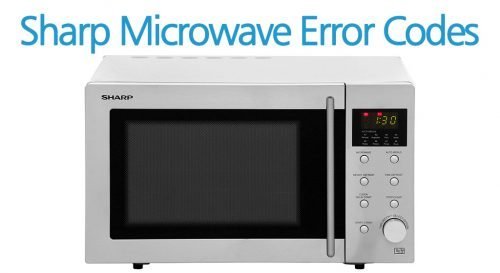
So why should you care about understanding and preventing an E2 error? Well, for one, it can save you a few bucks on unnecessary repairs. Plus, knowing a bit more about your microwave can extend its lifespan and keep your kitchen running smoothly. Think of your microwave as a trusted sidekick in your daily routine—when it isn’t working properly, things can quickly get frustrating. But don’t worry, I’ll walk you through how to keep this pesky error at bay.
Understanding the E2 Error Code
To prevent an error, it’s crucial to first understand what’s causing it. The E2 error in Sharp microwaves generally points towards a problem with the temperature measurement system. Essentially, the microwave can’t read how hot things are getting inside. Imagine trying to cook a meal with a broken thermometer. You wouldn’t know when your chicken is fully cooked or your soup is at the perfect sipping temperature.
A common cause of the E2 error is a faulty temperature sensor or thermistor. This small but mighty component monitors the heat levels within the microwave. If it’s not functioning correctly, the microwave might shut down as a safety precaution. It’s like having a smoke detector that doesn’t go off in a fire—pretty risky, right?
Furthermore, the error can sometimes be triggered by a simple glitch or reset issue. This is akin to your smartphone freezing out of nowhere—sometimes all it needs is a quick restart to get back on track. However, frequent occurrences of this error should prompt a deeper diagnosis to prevent further issues.
Basic Troubleshooting Steps
Now that we know what’s causing the E2 error, let’s dive into some basic troubleshooting. The first thing you should try is a “hard reset.” This doesn’t require any technical expertise—just unplug the microwave from the wall, wait a couple of minutes, and plug it back in. This can sometimes clear the error if it was a result of a simple glitch.
If the error persists, it might be a good idea to consult the microwave’s manual. Even if you don’t consider yourself tech-savvy, these manuals often have a section dedicated to troubleshooting common errors. It’s like a treasure map that can guide you through basic solutions without having to call in a costly technician right away.
Another straightforward step is to ensure that the microwave is properly ventilated. Obstructions in airflow can affect the internal components, including the thermistor. Just like how a car engine can overheat if the radiator is blocked, your microwave needs space to breathe too. Make sure it’s not pushed up against a wall and that its vents are clear of dust and debris.
Preventive Maintenance Tips
Prevention, as they say, is better than cure. To avoid seeing the E2 error code pop up again, establishing a regular maintenance routine for your microwave can be incredibly effective. Start with keeping the microwave clean and free from food splatters. Think about it; clogged food remnants can interfere with how the microwave’s sensors operate, just like how dirt can block your car’s air filter.
Additionally, be cautious about the types of dishes and coverings you use. Not all materials are microwave-safe, and using the wrong ones can affect the temperature sensors. It’s similar to using the right charger for your phone; just because it fits doesn’t mean it’s safe or effective.
Regularly check and replace the thermistor if necessary. If you notice recurring issues, it might be time to call in a professional. A technician can assess whether the sensor requires replacement. It might seem like a hassle, but it’s a small step that can prevent more serious problems or even a complete microwave failure in the future.
When to Seek Professional Help
Sometimes, despite your best efforts, an E2 error might persist. If you’ve tried resetting and checking for obvious issues without success, it’s wise to call in a professional. There’s no shame in recognizing when something is beyond your scope. A technician can safely open up the microwave and perform more in-depth diagnostics in a way that’s both safe and effective.
Ignoring persistent error codes can lead to more substantial damage, just like ignoring a leaky roof can result in costly home repairs down the line. By choosing to address the issue sooner rather than later, you’re saving time and money. Plus, a functioning microwave means more time cooking and less time worrying!
In the long run, ensuring your microwave is in top condition is not just about preventing one error code. It’s about creating a safer kitchen environment and ensuring your appliances serve you well. So, the next time you see “E2,” you won’t panic; you’ll know exactly what to do. Keep that microwave running smoothly, and enjoy a hassle-free cooking experience!